Doug Liman, the director of the new Tom Cruise movie ‘AMERICAN MADE,’ has a dirty secret in his family closet. His Dad was a Mafia groupie. Which wouldn’t matter, except Liman loudly claims his new film is based on the true story of Barry Seal, when it isn’t. And it amounts to a further Iran Contra-Cocaine Cover-Up.
ALSO: Isn’t the Mob involved somehow, at least reportedly, in the drug trade, the subject of Liman’s new movie?
Harvard lawyer, ultra-Establishment, had secret side
Doug Liman’s father, Arthur Liman, a respected and even lionized Establishment figure in the 1980’s, is regularly portrayed as a prominent Wall Street lawyer who selflessly served as lead counsel in the U.S. Senate’s Iran-Contra investigation, better-known as The Kerry Commission. The probe never got to the bottom of the over-ripe and completely-exposed Contra Cocaine scandal.
Which now makes a certain sense. Because attorney Arthur Liman was also a Mafia groupie, a “toadying sycophant” to a man whose extensive Mob ties went back to his days growing up in Brooklyn.
For more than 20 years, he was the consigliere to Steve Ross, the media mogul who engineered the world’s largest media and entertainment company into existence with the disastrous TIME-WARNER merger.
The deal began the destruction of the TIME INC journalism empire , but made Ross $193 million (in 1980’s money).
Doug Liman isn’t even the first member of his family to help conceal the truth about CIA drug trafficking. That’s because—just like Frank Sinatra— Arthur Liman had a “hoodlum complex.”
There are no “alternative facts”
 The real Barry Seal flew for the CIA at the Bay of Pigs. He flew for the CIA again with Air America in Laos. While getting ready to fly for them again in 1972, he was busted on a DC-4 cargo plane loaded with 13,500 pounds of C4 plastic explosive.
The real Barry Seal flew for the CIA at the Bay of Pigs. He flew for the CIA again with Air America in Laos. While getting ready to fly for them again in 1972, he was busted on a DC-4 cargo plane loaded with 13,500 pounds of C4 plastic explosive.
Just 10 days after the Watergate break-in, the plane was on its way to Mexico where the explosives were to be traded for heroin, which could be sold to pay off the busted Watergate burglars, already clamoring for hush money.
Yet according to the movie ‘AMERICAN MADE’ Barry Seal only showed up on the CIA’s radar when the Agency noticed that he was successfully smuggling Cuban cigars into the U.S. (Talk about sticking it to the man.)
Did the filmmakers test that proposition with focus groups? Does smuggling cigars show Seal as naughty but not too naughty to be sympathetic?
Couldn’t Liman have made a rollicking romp—about a happy-go-lucky drug smuggler in the cocaine-fueled go-go ‘80’s—just as easily with Tom Cruise and his aviator shades playing someone named Tommy Two-Ton? Or Bolivia Bob?
Instead, the movie Doug Liman made deliberately distorts the life of Barry Seal, an authentic and important American historical figure.
And thereby hangs a tale.
Days of Christmas past
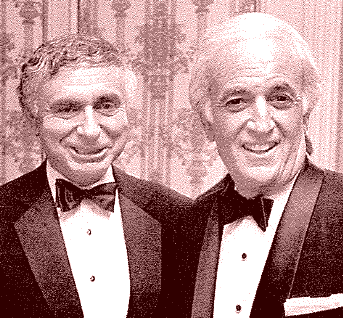 It was Dec 23 1991, two days before Christmas. The driveway in front of Guild Hall in East Hampton was choked with limousines for the funeral of Steve Ross.
It was Dec 23 1991, two days before Christmas. The driveway in front of Guild Hall in East Hampton was choked with limousines for the funeral of Steve Ross.
Steve Ross’ bodyguard Tony Battisti, who had been at his side for over a decade, stood at the door surveying everyone who entered. Crowded into a small space were executives from the new TIME-WARNER, as well as the people they had recently deposed.
Ross had made the stars his intimates. There to pay their respects were Steven Spielberg and his wife Kate Capshaw, Lisa and Dustin Hoffman, Chevy Chase, Quincy Jones and Nastassja Kinski, Paul Simon, and Barbra Streisand.
But there were still some present who recalled his former life, like Caesar Kimmel, Ross’s partner in Kinney parking, who author Connie Bruck said was currently the manager of a gambling casino in Moscow.
And, of course, Arthur Liman, who for more than 20 years had been Ross’s lawyer, close friend, booster and protector. Liman was the only business associate to address the group.
“Reading from notes, Liman spoke about Ross in much the same way he always had, emotional, admiring, adoring,” wrote Connie Bruck, in “Master of the Game” her book about Steve Ross.
Bruck had previously authored “Predators Ball,” about Michael Milken, who was one of Arthur Liman’s clients.
“I rail, as you do, that I cannot speak with him just once more,” Liman said.
“Quincy Jones also spoke. Addressing Ross directly, as he lay in his casket, voice quavering, he said “On a dance floor, Steve, you could really kill it!”
Steven Spielberg spoke. So did opera star Beverley Sills.
Barbra Streisand sang “Papa can you hear me.”
Mob Boss
Steve Ross, who grew up poor in Brooklyn, married into a chain of New York area funeral parlors, which he took public by merging with Kinney, a parking lot company that was a Mob front.
Ross’s partner in Kinney was Caesar Kimmel. Among Caesar Kimmel’s interests was owning Jai Alai facilities. One of his partners was “Fat Tony” Salerno.
Caesar Kimmel’s father, Emanuel Kimmel, had been a bootlegger, a major bookmaker, gambler, and one of the first operators of the numbers racket in New Jersey.
He was also a “close associate” of Mobster Abner ‘Longie’ Zwillman, who at the height of the Thomas Dewey Mob prosecutions was named one of the “Big Six.”
The others were Lucky Luciano, Bugsy Siegel, Louis Lepke Buchalter, Jake Shapiro and Meyer Lansky.
Kinney made payoffs to Fat Tony Salerno, who Fortune magazine once called “the wealthiest gangster in America.” Salerno, convicted of racketeering in 1986, was sentenced to 100 years in prison.
Bragging in a wiretapped call about how much money the Genovese family made from Kinney, he said, “We OWN Kinney.
Steve Ross’ early partners were gangsters, and he never lost his connection with them. Throughout his subsequent career, he was dogged by Mob ties.
Every time I try to get out…
In 1969, Steve Ross purchased the moribund Warner-Seven Arts film and record company for $400 million. But even after Steve Ross moved into the movie business and began shedding friends like a reptile shedding old skin, he continued doing business with his Mobster associates.
One example: at the height of Steve Ross’ success, Warner executives took bribes to invest in the Westchester Premier Theater, a Mafia-run business set up to skim money. The soon-to-be defunct suburban New York theater gave a Warner’s assistant treasurer $170,000 in return for investing Warner funds in the theater’s public offering.
Three Warner executives and several organized crime figures were convicted of everything from defrauding investors to looting the theater while it was in bankruptcy. Yet despite the treasurer’s close personal and business ties to Ross, he was never charged in the case.
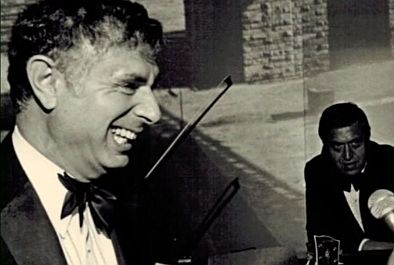 Author Connie Bruck wrote that he could thank Arthur Liman.
Author Connie Bruck wrote that he could thank Arthur Liman.
The scandal featured a famous photograph of Ol’ Blue Eyes taken in Sinatra’s dressing room backstage at the Westchester, after his April 11, 1976, performance.
In the picture with Sinatra are Carlo Gambino, Joseph Gambino, Jimmy ‘The Weasel’ Fratianno, future Gambino boss Paul Castellano, Frank ‘Funzi’ Tieri, reputed head of the Genovese family, Gregory De Palma and Richard Fusco.
Carlo Gambino, of course, was the “the Boss of Bosses” at the time, and head of the crime family that still bears his name.
Barry Seal’s fellow pilot James Miller told of a meeting the two of them took with Gambino when they were seeking permission to fly fresh shrimp from Honduras to restaurants in New York.
Paul Castellano was Carlo Gambino’s successor. Castellano was later shot and killed outside of Sparks Steak House on the Upper East Side, presumably by John Gotti or a Gotti associate. Jimmy Fratianno was considered the West Coast head of organized crime until he testified against the mob and entered the Witness Protection Program.
The TIME guys weren’t dummies
 Near the end of his long and remarkable business run, Steve Ross acquired TIME INC. TIME executives thought they were acquiring Ross’ Warner Communications.
Near the end of his long and remarkable business run, Steve Ross acquired TIME INC. TIME executives thought they were acquiring Ross’ Warner Communications.
Steve Ross was the man who talked the Ivy League journalists at Time Inc into “merging” with his Warner Communications and creating TIME-WARNER. TIME was a remarkably genteel upper-class world, a white-shoe company where money-making was in the service of journalism.
As the merger talks gained steam, the former president of TIME INC. James Shepley, and Arthur Temple, a TIME INC director, were overheard fanning the flames about Ross.
Shepley said, “Steve Ross is Mafia.”
After the Time board voted for the merger, one director said “Mafia, 12; Whiffenpoofs, 0.”
Toady toady toady
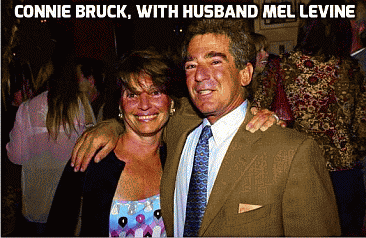 Are we making too much of what could be seen as Arthur Liman’s attorney-client relationship with Steve Ross?
Are we making too much of what could be seen as Arthur Liman’s attorney-client relationship with Steve Ross?
Not according to Connie Bruck’s book about Ross, in which Liman is almost a constant presence “Master of the Game.” From her bio at The New Yorker:
“Connie Bruck has been a staff writer at The New Yorker since 1989. She writes about business and politics.”
Bruck portrays Arthur Liman as a toadying sycophant so blinded by loyalty to Ross that he was more cohort than counsel, bending the law to near-breaking point to protect Ross from answering for any number of breaches of fiduciary duty to shareholders.
In a supporting role, there is attorney Arthur Liman, the lapdog Wall Street barrister who endlessly protected Ross from stockholders, the press and those few corporate board members who sought to call their imperious leader to account.”
“Some who knew the two men believed that Liman was so protective of Ross that, in matters involving him, Liman lost his sense of proportion.”
“Some commented, too, on Liman’s seeming infatuation with Ross, on the way this highly-sophisticated middle-aged lawyer seemed more a starry-eyed adolescent when he talked about his friend.”
“Among those who legitimized Steve Ross in the eyes of the people at TIME were Felix Rohatyn and Arthur Liman. Liman was the single most influential force for Ross with TIME.”
“Rhapsodic as always when he was speaking about Ross, Liman told me that Ross had just created the greatest deal in history.”
“During the nearly twenty years that Liman had been at Ross’ side, through recurrent crises, Liman had saved Ross repeatedly. And his own stature had grown. The more stellar Liman’s reputation grew, the more invaluable he became to Ross.”
“Liman was performing that role that Ross always loved best in his advisers: the outside man—lending things the patina of objectivity— who is really a secret insider.”
“Arthur Liman was Steve Ross’ best man at his third and final wedding. Several years later he became the godfather of Ross’ daughter Nicole.”
“Liman brought to his relationship with Ross a devotion that suggested a bond that was intensely personal.”
Lawyer and Ross confidant Arthur Liman called Warner board members before the February meeting to discuss Nicholas’ dismissal. Bruck writes, ”When I asked one of them how Liman had persuaded him that this was the right course, he replied, ‘It wasn’t a call to persuade.
It was ”This is what Steve wants, and you go along with it.”
It was a done deal.”
History begin to come into focus
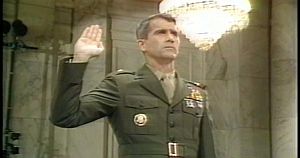 Arthur Liman was widely regarded as one of the best trial lawyers of his day, especially when it came to defending people charged with securities fraud or other white-collar crimes.
Arthur Liman was widely regarded as one of the best trial lawyers of his day, especially when it came to defending people charged with securities fraud or other white-collar crimes.
Yet Lieut. Col. Oliver L. North, who impressed exactly nobody as the sharpest knife in the drawer, ate him for lunch.
Was that by accident? Or by design?
What does this say about “his son the director,” Doug Liman, and his bizarre cover-up of the real life of Barry Seal in AMERICAN MADE?
NEXT: ARTHUR LIMAN VS. OLIVER NORTH


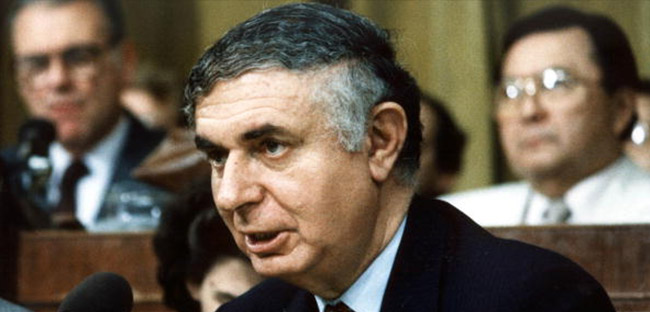
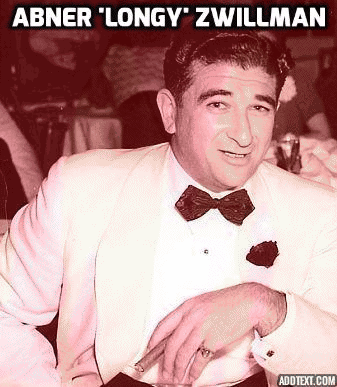
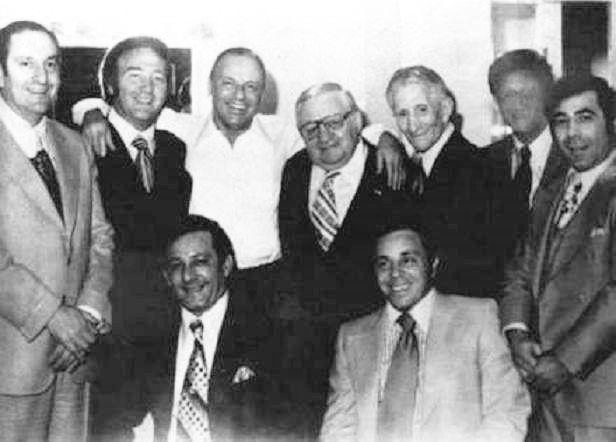
More great writing & puzzle assembly werk by Mr. Hopsicker. Too bad there is no money or glory in the truth, especially the truth about the what passes for governance here in the “Home of the Brave & Land of the Free…..!!!!!!!!!
Keep up the good work Daniel… At least we here all seem to be searching, trying…
Like father like son I guess.
https://www.usnews.com/news/national-news/articles/2017-04-13/apparent-drug-czar-pick-was-accused-of-judge-shopping-to-get-cocaine-expungement-for-friend
Who’s pushing the idea of Drug Czar for this guy?
https://www.washingtonpost.com/archive/politics/1985/10/14/death-of-a-sky-smuggler/38390bb6-509a-450d-af97-e8a695bd3b35/
http://articles.latimes.com/1985-09-12/news/mn-21488_1_cocaine
http://www.kentucky.com/entertainment/books/article44048643.html
Lexington native, editor of LA Times
http://www.nytimes.com/1985/09/26/us/parachutist-s-death-leads-to-trail-on-cocaine.html
Key Air
Watched the movie, laughed all the way through it at the audacity of the limited hangout.
I’ve followed your work for several years now and understand your dissatisfaction with the new Barry Seal movie. I believe the real story would be much more exciting and of course a much needed lesson in what’s really going on. My suggestion would be to produce a film with your version of events. Or if you’re in the dog-house with Hollywood see if you could get someone noteworthy (Oliver Stone comes to mind) to take on the project.
The Tom Cruise picture seems pretty flacid compared to the story that you’ve documented over the last few posts and would make a much better picture.
I alway look forward to Friday when you typically post something new. And I always wonder what kind of mischief is going on today, like 2017. I’m sure the s***t hasn’t stopped. It’s a shame that we have to wait to read about it as history.
Keep up the good work Daniel, and know that there are people that appreciate it.
I love this fascinating inside history which we seldom see elsewhere.